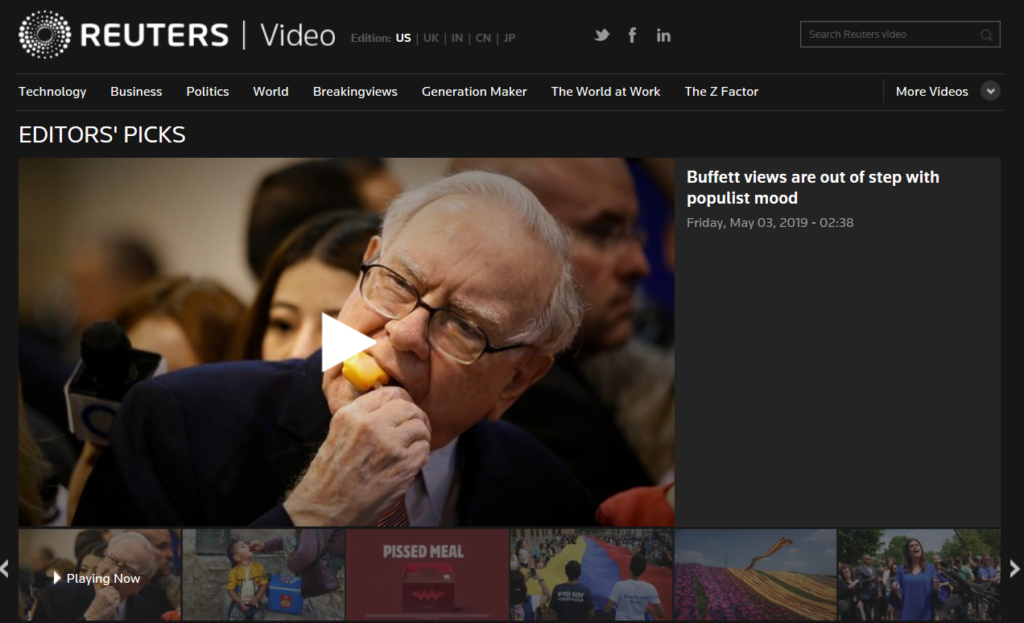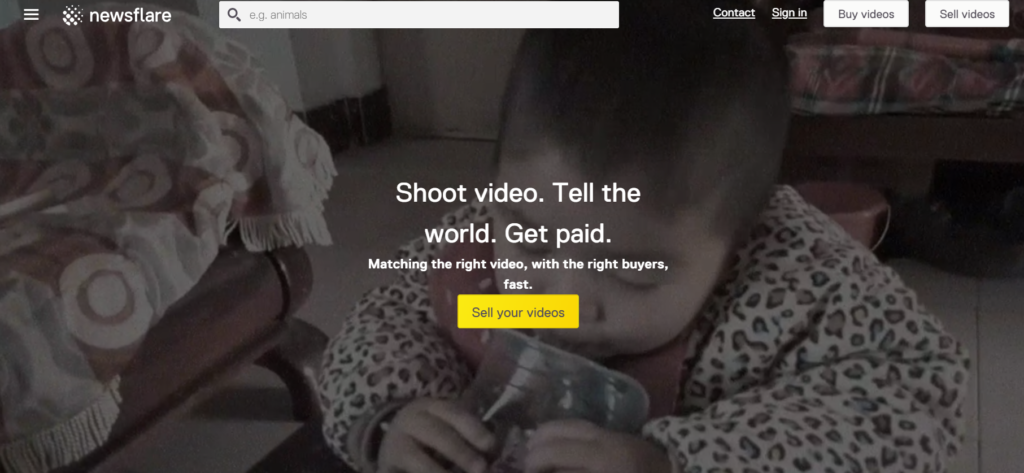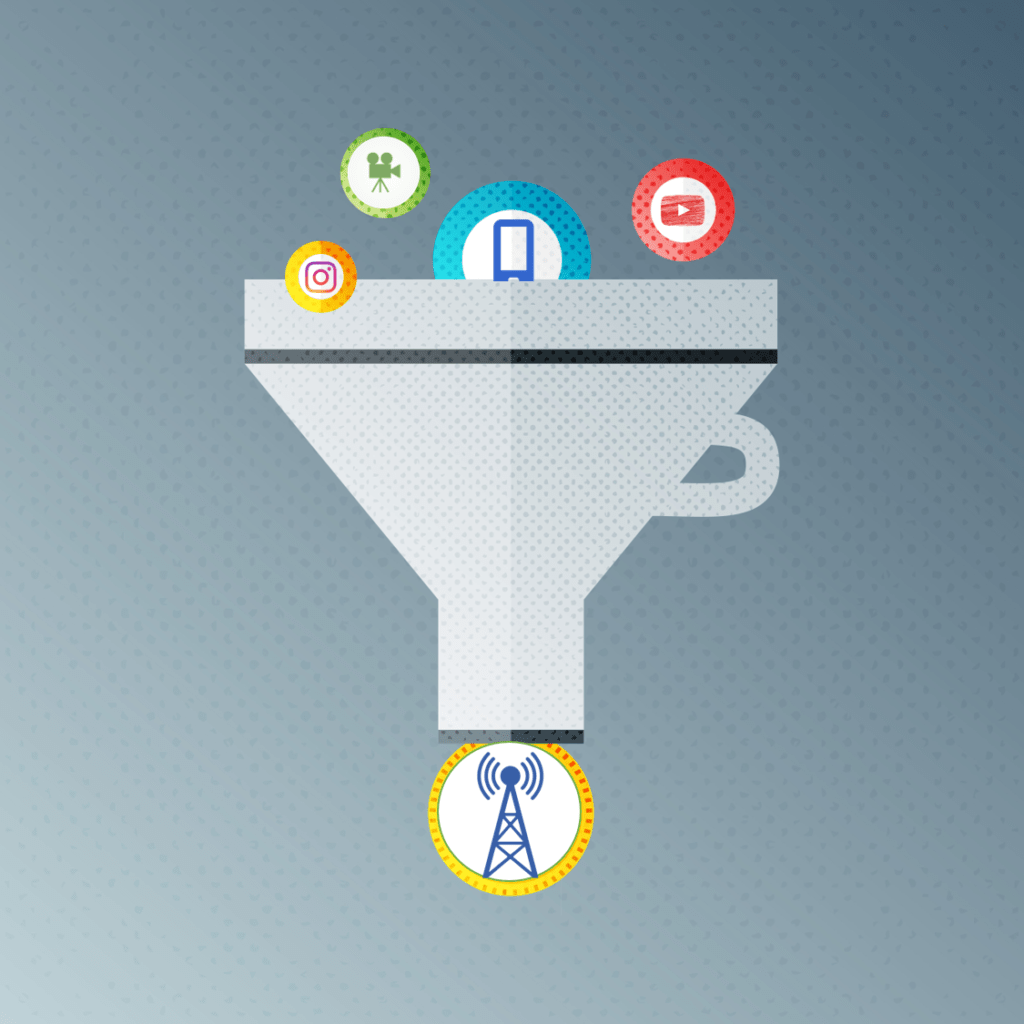
Digital brands as diverse as YouTube, Facebook, Spotify, and eBay have made a tidy living on the backs of consumers. We’re the ones who post those wacky videos, crazy memes, cool playlists, while we sell all kinds of stuff. In the process, it’s consumers creating a lot of digital content.
But at radio stations? Not so much.
Programmers and air talent are used to doing the content creation, whether it’s commercial, public, or Christian radio. After all, we’re accustomed to speaking into the narrow end of the funnel, broadcasting our content to a wide, diverse, passive audience. Radio broadcasts – people listen.
But these days, audience members are anything but passive. In fact, over the past decade or so, “cumers” don’t just sit around waiting for audio entertainment and information to come out of their speakers. Many are blogging and podcasting, while figuring out how to take great photos and shoot and edit video. And the democratization of the Internet has lit the fire in so many consumers who know that anyone can create content.
Yet, traditional media brands have been slow to turn to their audience for inspiration. And they don’t get more dyed-in-the-wool than Reuters – an international news service launched in 1851. That’s right – a decade before Abraham Lincoln showed up and Millard Fillmore was president when Peter Reuter started the operation in the U.K.
All these years later, Reuters is in the same boat so many other legacy media operations – battling out with a wide field of digital competitors. So, what’s their newest strategy?
UGC – user-generated content.
In a recent story in The Drum by Ian Burrell – “How Reuters turbocharged its new agency business by becoming a devotee of UGC” – a way to build its content, while transforming its brand. Burrell reports that in just two years, Reuters has grown its original content from 5 million to 17 million pieces – mostly on the backs of its readers and content partners.

Their Reuters Connect division now provides content from 35 different publishers, and the goal is to increase that portfolio by the end of 2019. This means incorporating content – photos and footage – from any number of dashcams, mobile phones, and other gadgets consumers just carry around.
Reuters’ manager of content partnerships, Justine Flatley, points to UGC as the catalyst of their brand growth. And it’s what she refers to as “lighthearted UGC” as the genre that is powering Reuters’ upsurge, primarily because it expands their serious brand image.
They’re using publishers like Newsflare (“Shoot video. Tell the world. Get paid.”) and Jukin Media (“the trusted global leader in user-generated entertainment”) to gin up their comedic content. Reuters also uses AccuWeather video content (people love watching storms and weird weather) as another UGC source.

So, what does this mean for the average radio station? Reuters is a global news brand, but in local markets, radio stations have not surprisingly lagged behind in their visual content creation – photos, videos, and even memes.
Techsurvey data continue to remind us that radio listeners watch more streaming video than streaming audio. Yet, most stations don’t have the resources to get into the video content business.
But they all have a cume audience. And everyone has a camera embedded in those devices we carry around like religious objects.
Whether it’s news stations looking for local news coverage, the sports radio station getting highlights from hometown games, or concert, festival, and event footage and photos for music stations, harnessing the power of UGC can provide website and social content even for stations with limited resources.
Interestingly, Reuters isn’t trying to monetize this crowdsourced content – yet. They are using it to bolster their content menu because after nearly 170 years in the news business, they know the value of content. You can never have too much of it.
Conversely, radio station websites and social pages continue to be hampered by a dearth of good digital content, making it difficult to aggregate adequate numbers of web and mobile visitors. The Reuters Connect model underscores the importance of staying current and relevant in these rapidly changing times – not to mention, connecting publishers and consumers to their service. That’s key for a news organization, whether it’s the hard breaking news or entertainment material, it’s especially important on the web.
Clearly, this is something that just about every radio station in this country could use more of. I often hear stations lamenting shrinking budgets and fewer staffers, making it challenging to maintain content, much less generate and create it. But the Reuters model proves that resourcefulness and inclusion can provide real solutions that go well beyond its staff.
For radio, it’s about “flipping the funnel” and letting the audience contribute content, curated of course. It’s also a way for radio to show a different view of a local market, from the audience’s perspective.

UGC is another way radio can open up those “digital doors.” It’s another way to turn that disruption into opportunity and connectivity.
- How Will Radio Fare In The Battle For The Fourth Screen? - April 3, 2025
- Like A Pair Of Old Jeans - April 2, 2025
- What’s Fair Is Fair - April 1, 2025




All about involvement, connection, presentation. Excellent way to start the week, Fred!
Appreciate it, Clark.